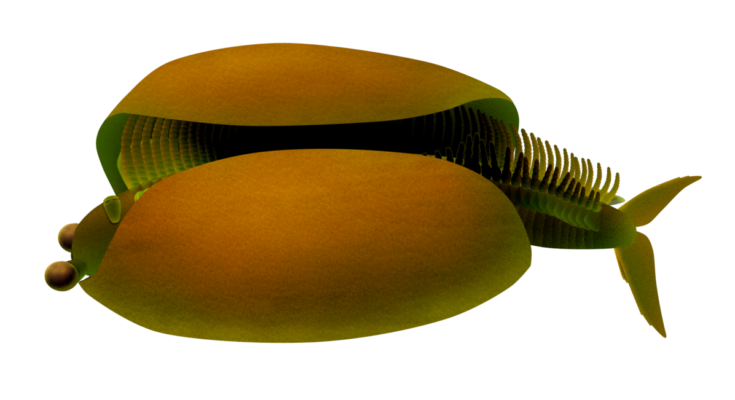About 500 million years ago, a strange creature swam in Earth’s seas. It had large eyes, a tail like a rudder, and 30 pairs of spiny legs. It was about the size of a cigar.
Most of its legs didn’t reach the ocean floor because they were within a shell that covered the middle part of its body. In the front of its mouth, it had jaw-like structures holding a tooth shaped like a trident. This creature looked like a tiny King Neptune of the sea.
The creature, though it looked like an alien fish taco, was an arthropod now known as Odaraia alata. It was about 20 centimeters long. Its life ended suddenly when it was buried under a thick layer of sediment. This burial preserved it in the fossil record, allowing us to learn about it today.
Odaraia may have played a role in evolution of creatures
In 1912, paleontologists discovered fossilized remains of these creatures in the Burgess Shale fossil site in the Canadian Rocky Mountains. These well-preserved fossils of Odaraia were studied again in the 1970s and 1980s. However, they were stored at the Royal Ontario Museum in Toronto for several decades.
Recently, scientists reexamined one of the fossils with well-preserved jaws using advanced tools and techniques. They focused on its mandibles. The experts were curious about its link to the Cambrian explosion, a time about 540 million years ago when many advanced organisms appeared. Odaraia may have played a role in the evolution of creatures with mandibles, such as insects, which dominate today.
Important work led by @trichodes, redescribing Odaraia from the #BurgessShale. Clear mandibles link hymenocarine bivalved arthropods and fuxianhuiids as stem group mandibulates. The fine mesh of spines on the limbs confirms that Odaraia and its relatives were filter feeders. pic.twitter.com/iQboECetp3
— Dr. Joe Moysiuk (@CambroJoe) July 24, 2024
Alejandro Izquierdo-López, an evolutionary biologist at the University of Toronto, led a study published on July 23rd in the Proceedings of the Royal Society B. He explains that the evolution of the mandible began a feeding frenzy.
He said that animals with mandibles had a significant advantage over others because they could break large structures into pieces and identify new sources of food.
Odaraiids were among the first to evolve jaws
Due to this special advantage, animals with mandibles quickly became the most diverse group on Earth. This dramatic success has made scientists curious about when mandibles first appeared. The O. alata fossil is key in determining this.
Alejandro Izquierdo-López explains that the first step was to find a Cambrian fossil that clearly showed mandibles. Previous identifications were unclear, but the team believed the O. alata fossil would be a better option. The features they needed to view were tiny, so they looked at a relatively large creature from a site known for excellent preservation.
Finding these features on an old specimen close to the start of the arthropod fossil record showed that odaraiids were among the first to evolve mandibles. Animals with these mouthparts may have easily shaped early food webs because ecosystems were likely not well developed.



